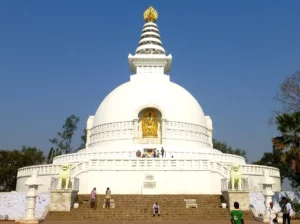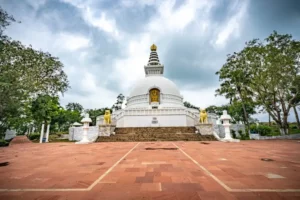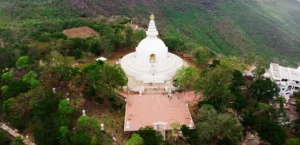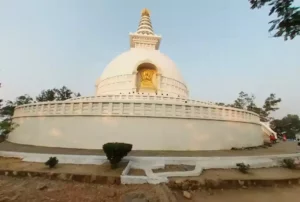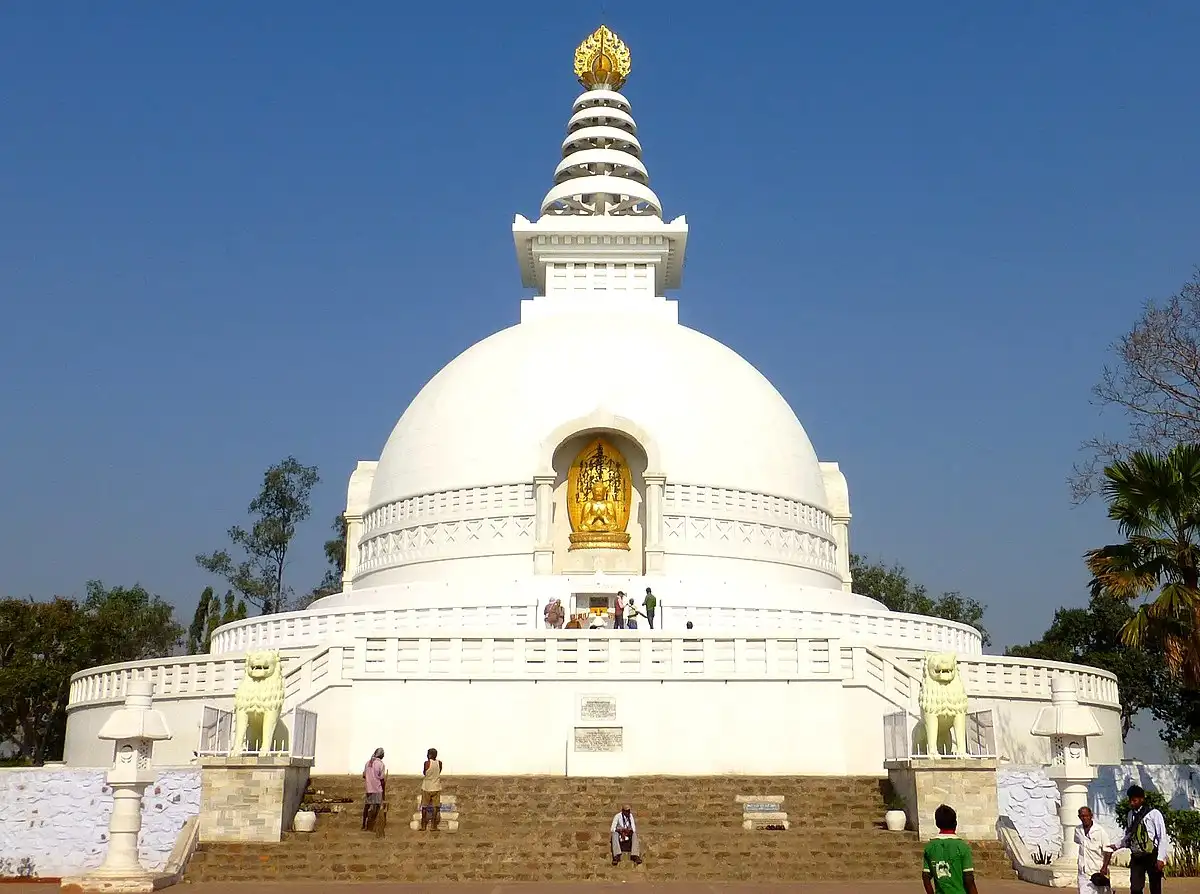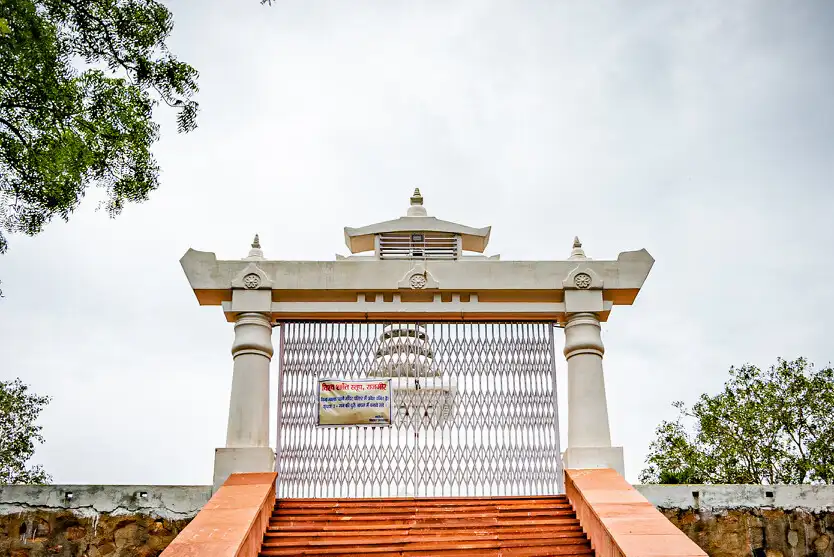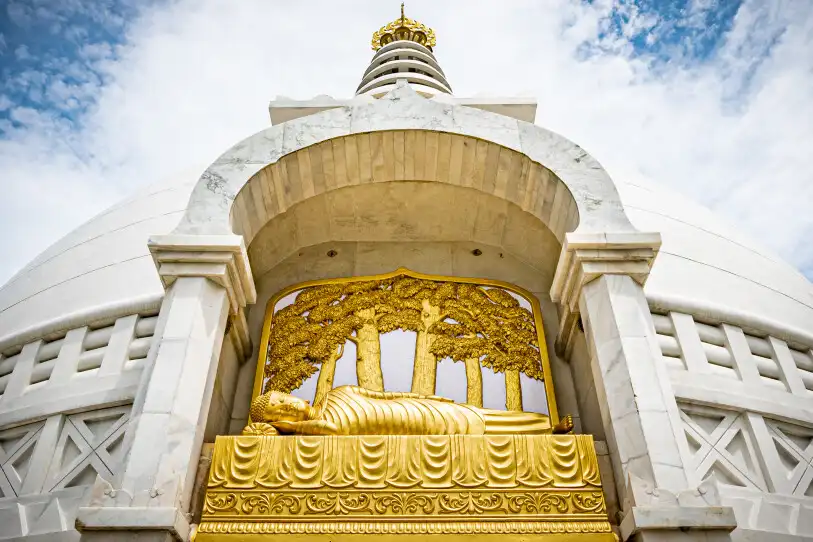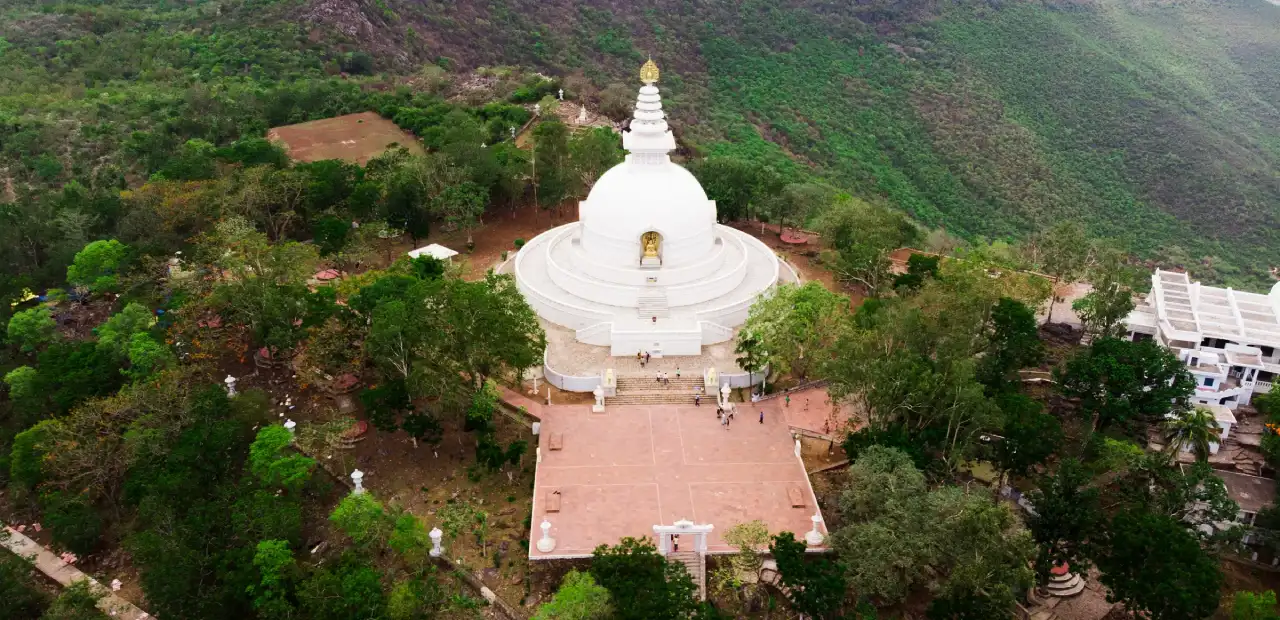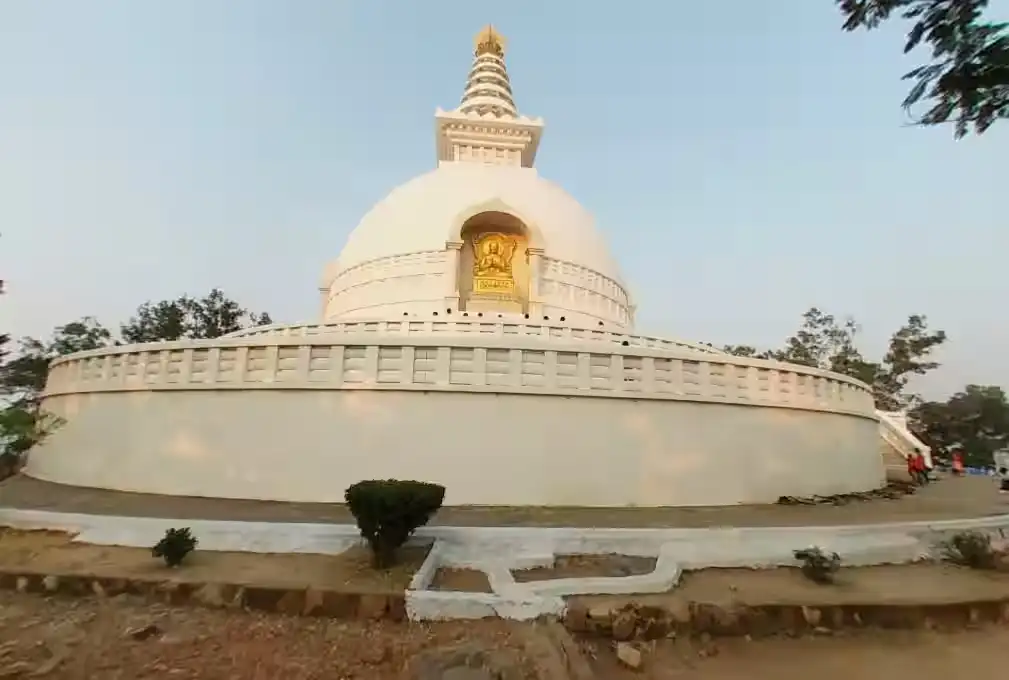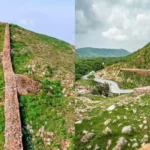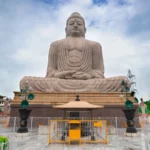Nestled amidst the serene landscape of Nalanda, the Vishwa Shanti Stupa stands as a symbol of peace, spirituality, and architectural brilliance. This monumental structure transcends time and space, beckoning travelers and spiritual seekers alike to immerse themselves in its tranquil ambiance. The stupa holds a profound historical significance, embodying the teachings and legacy of Lord Buddha. In this article, we delve into the captivating story of Vishwa Shanti Stupa, exploring its design, cultural relevance, and the enriching experiences it offers.
- The Historical Significance
- Architectural Marvel: Design and Symbolism
- The Tranquil Setting and Spiritual Ambiance
- Exploring the Stupa Complex
- How to Reach Vishwa Shanti Stupa
- Best Time to Visit
- Local Culture and Traditions
- Nalanda: A Brief Overview
- The Role of Vishwa Shanti Stupa in Promoting Peace
- Meditation and Mindfulness Retreats
- Preservation Efforts and Restoration
- Conclusion
- FAQs
- Photo Gallery
The Historical Significance
Rooted in the heart of Bihar, India, the Vishwa Shanti Stupa bears witness to a history rich with cultural exchange and spiritual evolution. It was inaugurated in 1969 by the 14th Dalai Lama, Tenzin Gyatso, as a tribute to Lord Buddha’s teachings of non-violence and universal harmony. The stupa stands adjacent to the ruins of Nalanda Mahavihara, a renowned ancient center of learning, further deepening its historical resonance.
Architectural Marvel: Design and Symbolism
The stupa’s architecture is a marvel that seamlessly blends traditional and modern elements. Its soaring height and pristine white façade evoke a sense of purity and aspiration. The stupa’s design follows the ancient tenets of Stupa architecture, incorporating concentric circles and intricate carvings. These carvings depict stories from Lord Buddha’s life, providing a visual narrative that educates and inspires.
The Tranquil Setting and Spiritual Ambiance
As you approach the Vishwa Shanti Stupa, a sense of tranquility envelops you. The meticulously landscaped meditation gardens invite visitors to contemplate and introspect. The gentle rustling of leaves and the distant chants from nearby monasteries create an atmosphere conducive to meditation and self-discovery. The stupa’s serene ambiance makes it an ideal retreat for those seeking respite from the chaos of modern life.
Exploring the Stupa Complex
Meditation Gardens
The stupa complex features meticulously manicured meditation gardens, each designed to evoke a specific emotion or state of mind. Walking through these gardens, you’ll find yourself drawn into a journey of self-exploration, with every step guiding you towards a deeper understanding of your inner self.
The Grand Stupa
At the heart of the complex stands the grand Vishwa Shanti Stupa. Its towering presence is a testament to human ingenuity and devotion. As you enter the stupa, a sense of reverence washes over you. The interior is adorned with intricate murals that narrate the life and teachings of Lord Buddha, serving as a visual medium for imparting wisdom.
The Life of Lord Buddha: Depictions and Sculptures
The stupa’s walls are adorned with meticulously crafted sculptures and frescoes that depict pivotal moments in Lord Buddha’s life. These artistic renderings not only showcase the skill of the craftsmen but also offer visitors an opportunity to connect with the profound teachings of compassion, mindfulness, and enlightenment.
How to Reach Vishwa Shanti Stupa
Reaching the Vishwa Shanti Stupa is a journey in itself. The stupa is conveniently accessible via various modes of transportation. If you’re arriving by air, the nearest airport is Patna Airport, followed by a scenic drive to Nalanda. Alternatively, Nalanda is well-connected by rail and road networks, making it easily reachable from major cities across India.
Best Time to Visit
To fully appreciate the allure of Vishwa Shanti Stupa, timing is key. The ideal time to visit is during the cooler months, from October to March, when the weather is pleasant and conducive to exploration. The annual Rajgir Mahotsav, held in October, presents a wonderful opportunity to witness vibrant cultural performances and immerse yourself in the local traditions.
Local Culture and Traditions
The vicinity of Vishwa Shanti Stupa offers a glimpse into the vibrant cultural tapestry of Bihar. The warm hospitality of the locals, coupled with traditional festivals and rituals, provides a holistic experience that goes beyond the physical surroundings. Exploring the local markets and savoring authentic Bihari cuisine adds layers of authenticity to your visit.
Nalanda: A Brief Overview
Nalanda, often referred to as the “Ancient Oxford of the East,” holds a special place in history. It was a thriving center of learning and intellectual exchange during ancient times. The Vishwa Shanti Stupa serves as a bridge between Nalanda’s illustrious past and its present, inviting visitors to partake in its legacy of wisdom and enlightenment.
The Role of Vishwa Shanti Stupa in Promoting Peace
In a world marred by conflict and turmoil, the Vishwa Shanti Stupa stands as a beacon of hope and harmony. It serves as a reminder of the power of non-violence and compassion, principles that resonate across cultures and religions. The stupa hosts various interfaith events and dialogues, fostering a sense of unity and understanding among diverse communities.
Meditation and Mindfulness Retreats
For those seeking a deeper spiritual experience, the Vishwa Shanti Stupa offers meditation and mindfulness retreats. Led by experienced practitioners, these retreats provide a structured environment for self-reflection and inner growth. The serene surroundings and the stupa’s spiritual energy create an ideal setting for individuals to embark on a transformative journey.
Preservation Efforts and Restoration
Preserving the magnificence of Vishwa Shanti Stupa is a collective endeavor. Dedicated teams work tirelessly to ensure the stupa’s structural integrity and aesthetic charm are maintained. Regular restoration projects and conservation efforts safeguard this cultural treasure for future generations to cherish and admire.
Conclusion
The Vishwa Shanti Stupa in Nalanda is more than a physical monument; it is a spiritual sanctuary that transcends time and boundaries. Its architecture, historical significance, and serene ambiance converge to create an experience that touches the heart and soul. As you stand before the stupa, surrounded by its ethereal beauty, you can’t help but feel a sense of inner peace and harmony. A visit to this sacred haven is an invitation to connect with your inner self, embrace the teachings of Lord Buddha, and contribute to a world yearning for tranquility and understanding.
FAQs
Yes, photography is allowed, but it’s advisable to be respectful of the spiritual ambiance and the fellow visitors.
Yes, guided tours are available, providing insightful information about the stupa’s history, symbolism, and cultural context.
Absolutely! The meditation retreats cater to individuals of all experience levels, including beginners.
Yes, there are various accommodation options available in Nalanda and the surrounding areas, ranging from budget to luxury.
The Rajgir Mahotsav, held annually in October, is a prominent local festival that offers a vibrant showcase of culture, arts, and traditions.
Embark on a journey of self-discovery and spiritual awakening as you explore the serene embrace of Vishwa Shanti Stupa. Its allure extends far beyond its physical presence, inviting you to immerse yourself in a realm of tranquility, wisdom, and inner peace.
Photo Gallery


